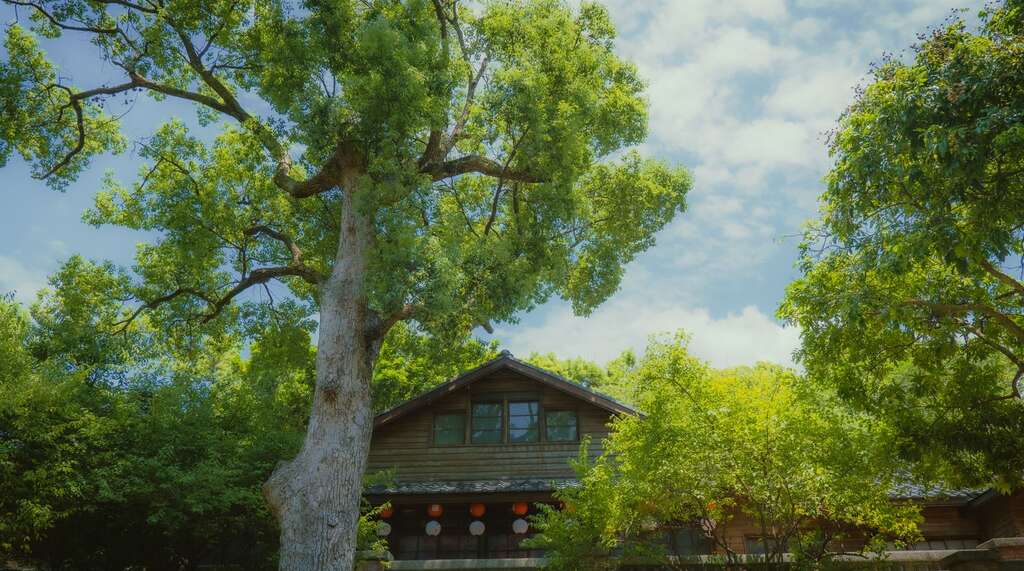Mei Garden Introduction
"Beitou Mei Garden," built in the late 1930s, is a Western-style villa that witnessed the wartime era and adapted to the local environment of Beitou. Standing for nearly a century near Beitou Park, it has had various owners, including the Japanese Governor-General, the Minister of the Army, and Taipei Prefecture. After World War II in 1945, it was mainly used as a private residence and was registered as a historical building in Taipei City in 2006 due to its architectural features. Built on elevated land next to the Beitou Creek, the design integrates mountain views on the south side with the flowing creek. The upper level features traditional Japanese wooden structures, while the lower level consists of a reinforced concrete basement, which served as an air-raid shelter. This unique structure stands out among contemporary Japanese-style row houses, bearing significant historical value. The entrance pillars feature a sign saying "Mei Garden," inscribed by calligrapher Yu Youren. Inside the courtyard, there is a protected camphor tree (No. 1679) under the "Taipei City Tree Protection Ordinance." The surrounding walls are built with "qulia" stone. The interior layout is meticulously designed, utilizing Beitou's rich geothermal resources to include a "hot spring bathroom." It also possesses an "attic" for storage and a lookout, serving to regulate indoor temperature and humidity, while functioning as a ceiling for the lower floor and supporting the building's main structure. The entrance is adorned with "glazed mosaic" tiles and a pebble-washed pillar, showcasing craftsmanship, while the "octagonal window" design reflects the Western-influenced aesthetics popular during the Japanese era, exhibiting a refined elegance that conveys a sense of historical beauty. In 2021, the Taipei Cultural Bureau commissioned the Taipei Cultural Foundation for its operation and maintenance, aiming to promote cultural asset reuse and local engagement. The future vision is to continue the unique cultural characteristics of Beitou through art exhibitions and educational activities, creating a lively space that merges historical, cultural, and artistic elements.


































